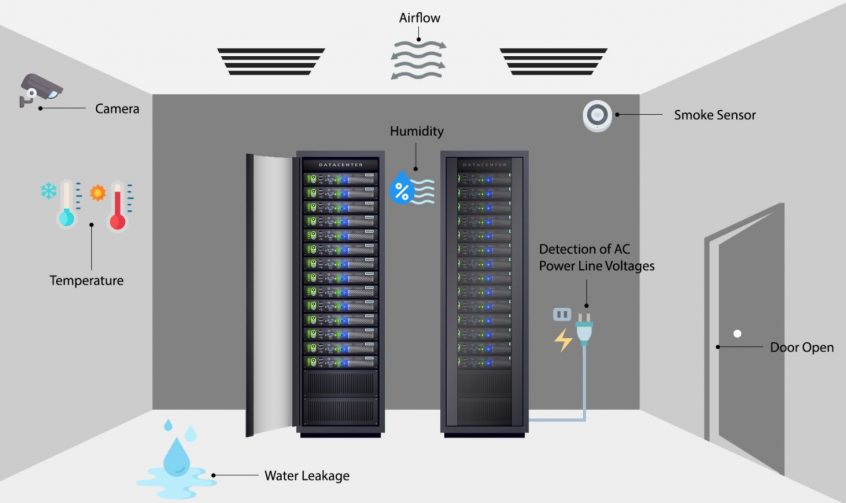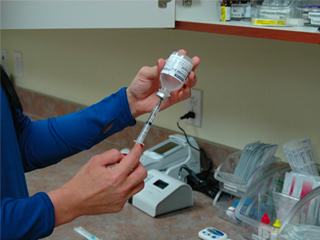What is a Wireless Data Center Environmental Monitoring System?
At least one Ethernet RJ45 connection is included in traditional environmental monitoring equipment for connecting to a local IP network. Once connected, the environmental monitoring device communicates data from wired sensors for temperature, humidity, water leaks, and other environmental data to an environmental monitoring system or DCIM software.
The environmental monitoring gateways are equipped with an RJ45 connection to the network. But communication from teh gateway to the sensors is wireless. A wireless monitoring device is powered by either a main power source or battery.
In a server room or data center, the wireless environmental monitoring system can ease a variety of installation and management difficulties while decreasing the total cost per monitored unit. For the same operational budget, more low-power wireless environmental sensors can be placed throughout a larger area of the data center facility, and the data center environmental monitoring system can be expanded more easily over time.
Wireless Technologies for Data Centres
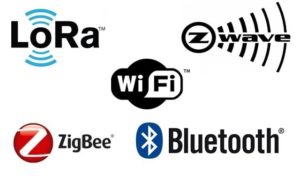
Photo Credit: www.rfpage.com
Wireless technologies for IT, server rooms, and data centers exist, each with its own transmission speed, range, and data packet size specifications:
- Wi-Fi
Wi-Fi is an acronym for “Wireless Fidelity,” and it can also refer to wireless local area networks or WLAN. Wi-Fi has limitations when used in wireless server rooms and data centers. It consumes a lot of electricity, and the bigger the data pipe and the more data it transmits, the more power it consumes. It is impractical to use battery power for these sensors. Also, WiFi is viewed as a security risk for data centers.
- Zigbee
Zigbee is a set of high-level communication protocols based on the IEEE 802.15.4 standard. In applications like home automation, Zigbee is ideal for compact, low-power devices. The signal can be influenced by multipath distortions in a server room or data centers application.
- LoRa
LoRa can reach distances of up to 15 kilometers and within buildings. It transmits over unlicensed bands such as 833MHz in Europe, 915MHz in North America, and 923MHz in Asia. LoRa isn’t well adapted to real-time data capture, which is necessary for server room and data center monitoring applications.
- Wireless Tunnel Gateways
The AKCP Wireless Tunnel Gateway is a solution for real-time data collecting and environmental monitoring. The physical layer of this protocol is LoRa Radio technology, which is exclusive to AKCP. LoRa benefits of extended transmission range and low power consumption are combined with the capacity to transfer bigger packets of data at a faster rate.
The Benefits of Wireless Data Center Monitoring
- Speed of Deployment
Sensors can be installed considerably faster and at a cheaper cost with a wireless environmental monitoring system than with a fixed-wire system. A wired installation in a medium-to-large data center may need hundreds of meters of costly network cable, as well as connection points and patch panels that take up valuable rack space. Wireless sensors may also be relocated fast and easily without requiring changes to wiring or layout plans.

Photo Credit: www.food-safety.com
- Lower Cost of Deployment
As it comes to operating expenses, they may be drastically reduced when compared to the time necessary to build new installations or modify existing ones on a cost-per-port basis.
- Reliability
When used appropriately, wireless technology can outperform fixed-wire connections in terms of dependability. An unintentional cable disconnection or a bad cable termination is more likely in a fixed-wire installation. When deployed as complete mesh networks with self-healing’ qualities, wireless communication can also be more dependable. Wireless tunnel sensors can take advantage of this by being set up to automatically connect to the nearest gateway and resume communicating if the connection is lost. Internally, sensor data is held and automatically uploaded when wireless communication is restored.
- Security
Cybersecurity is an issue for both fixed-wire and wireless networks, especially as the number of people using smartphones and tablets to access the Internet grows. The Industrial Internet of Things (IIoT), 5G, and Edge computing are all major applications that have influenced wireless communication security. In cyber-secure businesses such as banking, healthcare, and local government, wireless networking is becoming a normal part of everyday life and may be accessed via password-protected entry points. Wireless Tunnel products used in the server room and data center environmental monitoring applications typically employ the 128bit AES encryption technique, and the only data transported is non-sensitive values acquired by environmental sensors.
Server Room Temperature vs Data Centre Environment Monitoring
The size and kind of information required for environmental monitoring differ across computer and server room monitoring applications. Consider a tiny computer or server room with 1-3 rack cabinet servers. If each rack has roughly 5kW of IT load, the room will have around 15kW of cooling load at maximum utilization, necessitating the installation of a suitable sized air conditioner to maintain a tolerable ambient temperature of around 18°C to 25°C and humidity levels of 40% -60%.
Temperature and humidity monitoring are often accomplished by a single environmental monitoring device at the server cabinet or room level. Data is sent to software on the local computer network or to a web-based application through the internet. An alert can be delivered to an email distribution list, SMS text message, or a group of mobile phone numbers.
Temperature and humidity monitoring are often accomplished by a single environmental monitoring device at the server cabinet or room level. Data is sent to software on the local computer network or to a web-based application through the internet. An alert can be delivered to an email distribution list, SMS text message, or a group of mobile phone numbers.
AKCP Wireless Environmental Monitoring
The usage of wireless sensor networks for data center temperature monitoring can be a flexible and long-term solution. Millions of data points may be collected by wireless sensor networks, resulting in trustworthy information that can help improve operational efficiency, cost-effectiveness, and energy savings. A centralized monitoring platform can collect data from all of the gates in larger setups with many gateways. The AKCPro Server, a wireless tunnel server that also serves as a central administration platform, can help with this. This can be done on-premises using a company’s own server or in the cloud. It’s a data center infrastructure management platform that works well with the AKCP sensors.
A trustworthy wireless monitoring system will successfully monitor environmental conditions and will prove to be a worthwhile investment in the long term. To meet all data center demands, AKCP offers a variety of wireless sensors, including cabinet temperature and humidity monitors, air pressure differential sensors, airflow sensors, water leak sensors, and more.
Wireless Air Quality Sensor
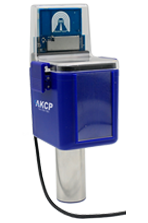
Wireless Tunnel Air Quality Sensor
Combines Air Particles, Metal Oxide gases (MOx), Temperature, and Humidity in a single sensor.
Detection for 5 different sizes. PM0.5, PM1.0, PM2.5, PM4 and PM10. The sensor is able to measure the mass concentration of particles in the PM1.0 to PM10 range and particle number concentration in the PM0.5 to PM10 range. The typical particle size is also measured. This measurement is based on the average size of the current sample.
Wireless Current Meter
3x AC Voltage Inputs up to 487 VAC with 4x current transformer inputs, up to 50A max per phase. Monitor power with billable grade accuracy over the Wireless Tunnel network with reports and alerts.
Wireless Cabinet Sensor
The Wireless Cabinet Analysis Sensor (W-CAS) features a cabinet thermal map for detecting hot spots, a differential pressure sensor for analysis of airflow, and 2x dry contact inputs for door security sensors. Powered by USB, or 4x AA rechargeable batteries and using AKCP Wireless Wall Penetrating Technology data is collected and sent to one of our wireless sensor gateways. A wired version of the W-CAS is also available for use with the sensorProbeX+ base units.
- Thermal Maps
Cabinet thermal maps consist of 2 strings of 3x Temp and 1x Hum sensor. Monitor the temperature at the front and rear of the cabinet, top, middle, and bottom. The △T value, front to rear temperature differential is calculated and displayed with animated arrows in AKCPro Server cabinet rack map views.
- Differential Pressure
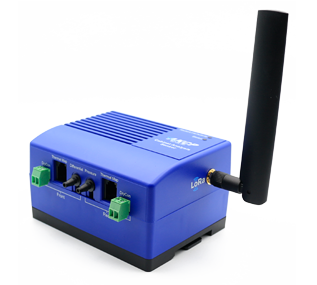
Wireless Cabinet Analysis Sensor
There should always be a positive pressure at the front of the cabinet, to ensure that air from hot and cold aisles is not mixing. As air travels from areas of high pressure to low pressure, it is imperative for efficient cooling to check that there is higher pressure at the front of the cabinet and lower pressure at the rear.
- Door Contacts
I/O dry contact inputs can be used to monitor the front and rear doors of the cabinet, or alternatively alarm outputs from a UPS or other rack-mounted equipment.
- Rack Maps and Containment Views
The L-DCIM runs AKCPro Server. Dedicated rack maps displaying W-CAS sensor data can be configured to give a visual representation of each rack in your data center. If you are running a hot and cold aisle containment, then containment views can also be configured to give a sectional view of your racks and containment aisles.
Conclusion
A silent revolution is taking place, fueled by advancements in 5G, Edge computing, and the Internet of Things (IoT). Wireless technologies are connecting an increasing number of devices to create data for analysis and automation. The most typically deployed environmental monitoring systems in server rooms and data centers have been fixed wire systems connected to the local IP network through RJ45 ports.
Several vendors of data center environmental monitoring systems now provide both fixed-cable and wireless connection options, either as part of an existing product or as a separate set of features. It may only be a matter of time until wireless environmental monitoring systems become the dominant type in server room and data center applications, given their cheaper cost per port monitoring and higher flexibility. While security issues will always exist in crucial environments such as server rooms and data centers, the worldwide adoption rate of mobile phone banking apps demonstrates how rapidly these worries can be alleviated by speed, functionality, and simplicity of use.
Reference Links:
https://www.mesoft.ae/products/environment-monitoring-system/server-room-data-center
https://www.telcomanager.com/en/blog/levels-of-alarms-and-environmental-monitoring-for-data-centers/
https://www.mesoft.ae/

